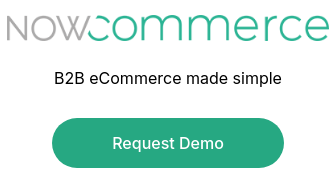Whether you're in retail or wholesale, the primary goal for any business owner is to drive sales and boost profitability. But what exactly is B2B eCommerce, and how does it differ from B2C? While the fundamental distinctions between B2C and B2B are straightforward, the revenue outcomes can be significantly different.

B2C (Business to Consumer)
- Relatively simple sales
- Fixed prices
- Low quantities
- Easy shipping
- Little regulation or tax complexity
- Products are easily showcased and marketed
B2B (Business to Business)
- Prices are highly variable
- Higher product volumes
- Need flexible shipping and logistics solutions
- Taxes and regulatory requirements impact sales
- Marketing is more complex
B2C represents a retail transaction where a business directly sells a product to a consumer. This transaction can occur in various settings, such as a mall, a store, a restaurant, or even at home when subscribing to a pay-per-view movie. Recently, B2C has evolved to primarily refer to online transactions, where manufacturers or retailers offer their products to consumers over the Internet. This B2C model is likely the most familiar online purchasing process for many. If you've ever bought an item online for personal use, you've engaged in a B2C transaction.
On the other hand, B2B encompasses exchanges and transactions between a company and its trading partners, including suppliers, collaborators, subsidiaries, and large organizational customers. These transactions can occur through a network or a privately owned connection. However, in today's digital landscape, they are predominantly conducted online using automated applications that require minimal human intervention.
B2B online sellers now understand that the customer experience must closely mirror the B2C consumer experience. The ease and convenience of B2C transactions have set new standards, prompting business customers to seek similar experiences in their online dealings with suppliers and subsidiaries. As enterprise and purchasing software become more accessible, particularly in mobile applications, B2B online buying is set to rise. This advancement empowers purchasing company employees to use smartphones and tablets to procure goods anytime, anywhere.
Many B2B buyers prefer making purchases online and conducting thorough product research through websites, reviews, and comparison tools, much like individual consumers. While distinct differences exist between B2C and B2B, numerous similarities are emerging due to the widespread appeal of the B2C customer experience. Key characteristics making this transition include:
- Personalization
- Customization
- Interactive Catalogs
- Customer Reviews
- Inventory Availability
Your B2B processes can be brought up-to-date with the help of a B2B eCommerce platform.

